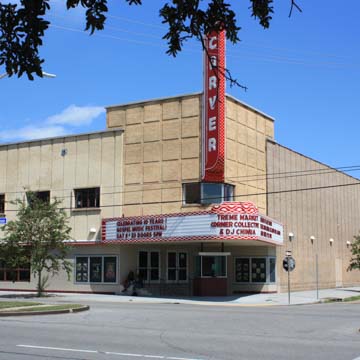Built when segregation was still in effect, this Moderne movie theater served African American patrons with seating for 1,050. Dallas-based architect Corgan had established his practice in 1938 specializing in movie theaters, and this building’s brick-veneered concrete-block walls are geometrically articulated solely by repeating vertical grooves and horizontal-shaped windows. The theater’s boldest feature is the corner entrance, with its freestanding ticket booth (rebuilt), angled marquee, and illuminated vertical sign with the theater’s name on a red background. After the theater closed in 1980, the interior was converted into offices, including a medical clinic, which closed after it was flooded by six feet of water during Hurricane Katrina. The building was renovated in 2014.
You are here
Carver Theater
If SAH Archipedia has been useful to you, please consider supporting it.
SAH Archipedia tells the story of the United States through its buildings, landscapes, and cities. This freely available resource empowers the public with authoritative knowledge that deepens their understanding and appreciation of the built environment. But the Society of Architectural Historians, which created SAH Archipedia with University of Virginia Press, needs your support to maintain the high-caliber research, writing, photography, cartography, editing, design, and programming that make SAH Archipedia a trusted online resource available to all who value the history of place, heritage tourism, and learning.















